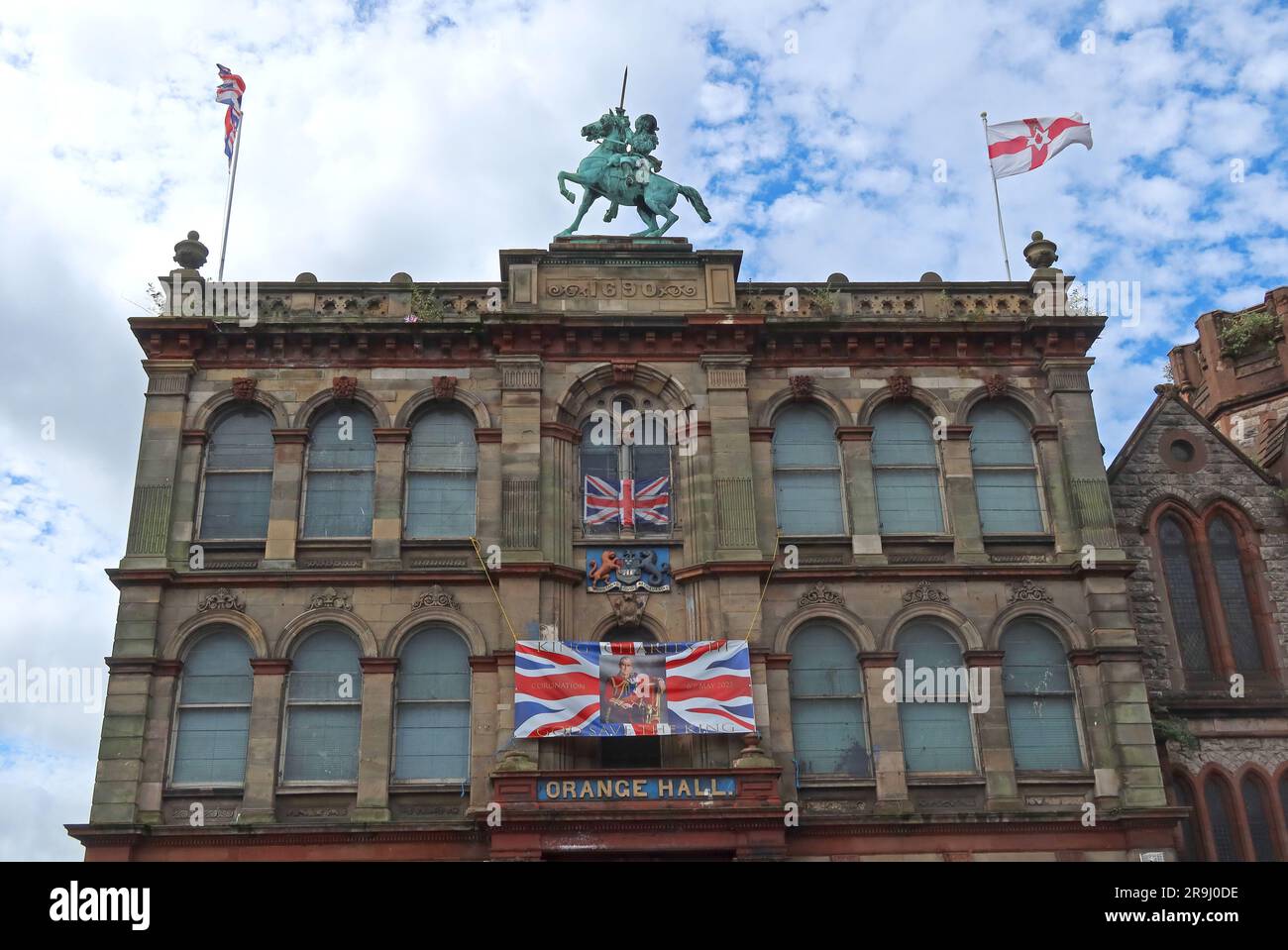Belfast Orange Hall 1886, Clifton Street, Belfast, Northern Ireland, UK, BT13 1AB

Image details
Contributor:
Tony Smith / Alamy Stock PhotoImage ID:
2R9J0DEFile size:
45.7 MB (1.4 MB Compressed download)Releases:
Model - no | Property - noDo I need a release?Dimensions:
4888 x 3271 px | 41.4 x 27.7 cm | 16.3 x 10.9 inches | 300dpiDate taken:
24 June 2023Location:
Clifton Street, Belfast, Northern Ireland, UK, BT13 1ABMore information:
Main Belfast hall for Orange Order; contains meeting rooms, a museum, and facilitates educational tours to showcase the political and religious aspects of the Order; starting point of the largest 12th July cultural parade in Ireland; Managed by voluntary Committee comprised of members of lodges; no staff; Opened 1886; largest purpose built Orange Hall in the world; statue of King William III on the cornice, 12ft high and made of bronze, unveiled in 1889, is the only equestrian statue in Northern Ireland; B listed. The Loyal Orange Institution, commonly known as the Orange Order, is an international fraternal movement based in Northern Ireland and primarily associated with Ulster Protestants (it also has lodges in England, Scotland and the Republic of Ireland, as well as in parts of the Commonwealth of Nations and the United States. Most of the organization's lodges are located in Ireland, England, and Scotland, although others can be found throughout the British Commonwealth, including Canada, Australia, New Zealand and Africa. The lodges of every country are independent, but the Orange Order meets in a triennial world council. The Orange Order was founded by Ulster Protestants in County Armagh in 1795, during a period of Protestant–Catholic sectarian conflict, as a fraternity sworn to maintain the Protestant Ascendancy in Ireland. It is headed[definition needed] by the Grand Orange Lodge of Ireland, established in 1798. Its name is a tribute to the Dutch-born Protestant king William of Orange, who defeated Catholic king James II in the Williamite–Jacobite War (1688–1691). The order is best known for its yearly marches, the biggest of which are held on or around 12 July (The Twelfth), a public holiday in Northern Ireland The Orange Order is a conservative, British unionist and Ulster loyalist organisation. Thus it has traditionally opposed Irish nationalism/republicanism and campaigned against Scottish independence.